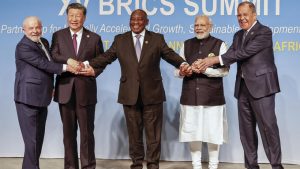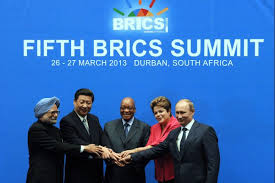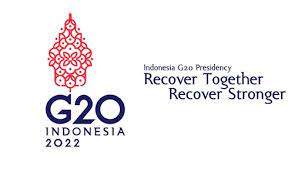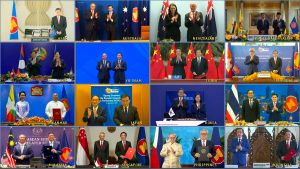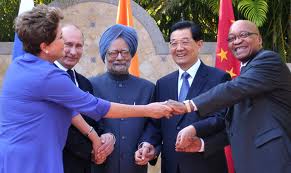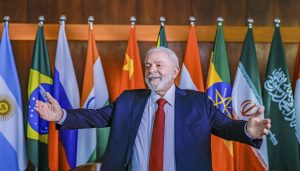
Just in time for the July 4th break here is the latest from Alan’s Newsletter. For my American friends – ‘A Good Fourth of July’
So the summits just seem to keep rolling along. Unlike the most recent summits, the G7 and NATO, the more immediate ones are without leaders and the most disruptive one of those – US President, Donald Trump.
Just concluded in Seville Spain is the 4th International Conference on Financing for Development (FfD4). As noted by SDSN, The UN Sustainable Development Solutions Network (SDSN) which operates under the auspices of the UN Secretary-General, and designed to mobilize a network to drive action on the Sustainable Development Goals (SDGs) and the Paris Agreement on Climate Change this summit gathering is designed to:
“This landmark convening offers a critical opportunity for Member States to advance crucial reforms to the Global Financial Architecture (GFA), the system of public and private finance that channels the world’s savings into investment.”
As described by IISD, the International Institute for Sustainable Development (IISD), an independent think tank:
“There are four categories of public goods that must be addressed in Sevilla. First, the UN member states must adequately finance the UN system itself.”
“Second, UN member states must increase their official financing of the Sustainable Development Goals in the lead-up to 2030, including debt relief as needed to create the fiscal space to achieve the SDGs.”
“These countries have delayed critical increases in International Monetary Fund quotas and Special Drawing Rights allocations.”
“Third, UN member states must increase their financing of the global commons, including the biodiversity of the world’s tropical rainforests, the marine life of the oceans, and the protection of the atmosphere, freshwater, soils, coastlines, wetlands, and other ecosystems from transboundary pollution and global-scale degradation.”
“Fourth, UN member states must agree on critical reforms of the international financial markets to ensure that world saving flows to the countries with the highest investment returns and the highest growth prospects – which are the poorer countries in the world. This is not the case today.”
What these objectives tell us at a glance is that the ‘system’ is still operating with blinders on when it comes to multilateralism and the prospect of policy advances through multilateral institutions. Today’s ‘system’ is not your classic multilateral system given we are in the midst of Trump 2.0. Indeed, these days it is more likely that Trump will withdraw US funds altogether as opposed to meeting the all too evident funding crisis for various UN agencies including the UN itself.
Meanwhile, we are already closing in on the next leader-led summit, the BRICS+ set to take place in Brazil and led by its president, Luiz Inácio Lula da Silva, or Lula, for July 6th-7th. The BRICS has a longstanding and high profile emerging around the same time as the leader-led G7 Summit. The BRICS was seen in some ways as the – not G7 – meaning not made up of western allied leaders. As described by Mariel Ferragamo in a Background note at CFR:
“Established in 2009, BRICS was founded on the premise that international institutions were overly dominated by Western powers and had ceased to serve developing countries. The bloc has sought to coordinate its members’ economic and diplomatic policies, found new financial institutions, and reduce dependence on the U.S. dollar.”
The original membership was made up of: Brazil, Russia, India, China, hence the BRIC to become by 2011 the BRICS adding as a full member South Africa. The BRICS remained static until 2024 but then enlarged with:
- Egypt.
- Ethiopia
- Iran
- UAE
- Saudi Arabia, though it has not fully adopted membership;
- and in 2025, Indonesia
Argentina was also invited to become a full member but according to the CFR Backgrounder, “President Javier Milei pledged to turn the country in a pro-West direction, saying that it would not “ally with communists.”
Meanwhile, the BRICS created an additional category – this ‘partners’. The partners now include:
- Belarus
- Bolivia
- Cuba
- Kazakhstan
- Malaysia
- Thailand
- Uganda
- Uzbekistan,
- Nigeria and in June
- Vietnam
Partner countries are invited to BRICS summits and other meetings, but their participation may be limited or contingent on consensus among full members.
There then are the current members and additionally the partners. But the question: what is the leadership role of the BRICS+? This remains unclear. As described by Feliciano Guimarães, international relations professor at the University of São Paulo (USP), and academic director at the Brazilian Center for International Relations (CEBRI) he argues, in Valor International, … “the expansion of BRICS demands more diplomatic skill from Brazil to ensure that defense and security disputes don’t derail the bloc’s cooperation and global governance reform agenda.”
“Mr. Guimarães added that negotiations would already have been difficult without the Iran-Israel war, but that doesn’t mean the summit is doomed: “Yes, it’s gotten harder, but it’s unlikely Brazil will fail. Everyone—including Iran’s government—has an interest in Brazil’s success at this summit. Exposing President Lula to failure would be a major setback for BRICS.””
The membership expansion of the BRICS has left questions over the role of the group as you can read from Feliciano’s examination. What leadership role is possible for this diverse enlarged group, especially with major powers such as China and Russia and indeed also India? Can the BRICS group play a role in shaping global order relations as might the other contending global leaders summit, the G20? If so, how? Can the BRICS+ play a stabilizing role, or is it more likely to play a disruptive role in a heightened and possibly more fractious geopolitical environment?
For Brazil the current host, and its leader Lula, the role has become more fraught. As pointed out by Christopher Sabitini in his article for Chatham House titled, “Brazil’s BRICS agenda may be hard to accomplish after the Iran–Israel war”:
“But the Iran–Israel war – and Russia’s invasion of Ukraine – will likely create dangerous distractions to an effective summit outcome along the lines that Brazil had hoped when it assumed the bloc’s presidency.”
On top of these conflicts, Lula, himself has suffered from poor numbers and rising discontent in the country as opposed to his much greater popularity in previous leadership episodes. As the Economist sees it:
“Originally, being a member had offered Brazil a platform from which to exert global influence. Now it makes Brazil look increasingly hostile to the West. The more China transforms the BRICS into an instrument of its foreign policy, and the more Russia uses the BRICS to legitimise its war in Ukraine, the harder it will be for Brazil to keep saying it is non-aligned,” says Matias Spektor of the Fundação Getulio Vargas, a university in São Paulo.”
“Brazil’s role at the heart of an expanded and more authoritarian-dominated BRICS is part of Lula’s increasingly incoherent foreign policy. He has made no effort to forge ties with the United States since Donald Trump took office in January. There is no record of the two men ever meeting in person, making Brazil the largest economy whose leader has not shaken hands with America’s president. Instead Lula courts China. He has met Xi Jinping, China’s president, twice in the past year.”
So where does this leave the BRICS+? Again, according to Christopher Sabitini at Chatham House:
“The risk was the body would be turned into an anti-American forum, doing the bidding of China and Russia. For many, the later 2024 BRICS summit in Kazan, hosted by Vladimir Putin, reinforced the perception that the bloc had become a platform to challenge the Western order – even as democratic Indonesia joined the group.”
“Now comes the test: can a heterogenous BRICS+ grouping collectively and constructively promote Brazil’s brand of democratic multilateralism, respect for international law and measured reform of the international system? And can it serve as the fulcrum to facilitate the global rebalancing of economic, diplomatic, and normative power Brazil wants?”
“Much will hinge on whether the group can move beyond emptily opining on the Israel–US–Iran and Russia–Ukraine wars, to issues of more lasting, institutional consequence. Officially, Brazil is hoping to guide discussion toward concrete themes: the green energy transition, cooperation on vaccines, and expanding most-favoured nation status to all countries in the World Trade Organization.”
To add to Lula’s headaches, key leaders, namely Vladimir Putin, and far more surprisingly, Xi Jinping are not apparently going to attend the Summit. For Putin the international arrest warrant from the International Criminal Court is sufficient to keep him away. But the absence of Xi Jinping is more troubling as indeed this the first non-appearance at the BRICS for the Chinese leader. And Lula will have to deal with Iran and its determination to defend its position following the war with Israel and US bombing of Iran’s nuclear sites. As Christoper Sabitini suggests:
“Iran has announced that it will send a delegation, as will Russia. Their presence risks dragging the summit away from Brazil’s agenda towards issuing statements in defence of national sovereignty – a theme pointedly skirted before by BRICS member states when raised in the context of Russia’s invasion of Ukraine.”
Nevertheless, Mihaela Papa, the director of research and principal research scientist at the MIT Center for International Studies, where she leads the BRICS Lab. and Walter Streeter of the Fletcher Forum see the BRICS+ this way:
“As the BRICS group prepares for its July 2025 summit in Brazil, a new map of global alignment is emerging—one driven not by military alliances or ideology, but by a push for new partnerships in pursuit of multilateralism, trade and development.”
“Now, with Washington further retreating from key international institutions and U.S. tariffs unsettling global markets, BRICS has moved into the global spotlight, positioning itself as the new champion of multilateralism.”
“From its outset, BRICS has stood on two pillars: the determination to chart an independent course and the drive to invest in new international institutions.”
“BRICS already committed to deeper financial cooperation at the bloc’s 2024 summit in Kazan, Russia, creating a cross-border settlement system and strengthening banking and financial markets infrastructure. The 2024 summit also tasked BRICS finance officials with considering and reporting on the use of local currencies, payment instruments and settlement platforms. These efforts, coupled with deeper engagement with BRICS+ countries and realignment of supply chains, further help reduce reliance on the dollar.”
Such a move away from the dollar has raised the ire of President Trump who has threatened serious tariffs if the BRICS threatens the US reserve currency position.
So what will constitute a measure of success for Brazil in its BRICS hosting? I asked my good colleague Gregory Chin at York University, and a close observer especially of the BRICS, New Development Bank – see his article in Global Policy, “Introduction – The evolution of New Development Bank (NDB): A decade plus in the making”. Now one aspect he mentioned will not occur: that is the attendance of leaders from key members Russia and China. But then he suggests:
“One substantive goal of the Brazilian authorities for their BRICS Presidency is to advance a shared intra-BRICS global climate agenda — the “BRICS Climate Leadership Agenda”, plus a “BRICS Leaders’ Framework Declaration on Climate Finance”. If a joint statement on each can emerge from the Rio Summit, and some actions ensue, it would constitute success for the summit.”
Well there then from my good colleague is a measure of BRICS+ Brazilian success. Let us see how it goes; and I will return to the BRICS+ after the Summit.
This Post first appeared at my Substack, Alan’s Newsletter
https://globalsummitryproject.substack.com/p/finding-success-for-the-brics
Image Credit: Ricardo Stuckert

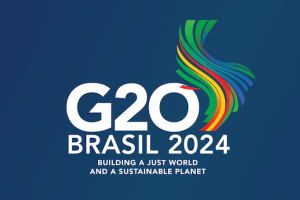 Who would think that the threat to the global order could emanate from global summitry leadership. But that appears to be a real possibility. Let me explain.
Who would think that the threat to the global order could emanate from global summitry leadership. But that appears to be a real possibility. Let me explain. We are definitely in the midst of Global Summitry gatherings. With the BRICS Summit just recently ended, we are deep into the G20 weekend gathering in New Delhi. So much commentary has accompanied these summitry gatherings. But I caution casual observers and readers: there are way too many assessments and conclusions drawn by all those folks that unfortunately barely pay attention to Global Summitry through much of the year. You can see this in the various ‘hair on fire’ commentaries in the assessments and consequences of the actions of key players in both the BRICS and now especially with the G20. Too many declarations of the G20 demise; firm conclusions that China and Russia would block any consensus statement that sought to condemn Russia’s aggression against Ukraine; the fragmentation of global summitry with the rise of the BRICS plus and the demise of the G20 with leaders from Russia and China choosing to absent themselves from summit.
We are definitely in the midst of Global Summitry gatherings. With the BRICS Summit just recently ended, we are deep into the G20 weekend gathering in New Delhi. So much commentary has accompanied these summitry gatherings. But I caution casual observers and readers: there are way too many assessments and conclusions drawn by all those folks that unfortunately barely pay attention to Global Summitry through much of the year. You can see this in the various ‘hair on fire’ commentaries in the assessments and consequences of the actions of key players in both the BRICS and now especially with the G20. Too many declarations of the G20 demise; firm conclusions that China and Russia would block any consensus statement that sought to condemn Russia’s aggression against Ukraine; the fragmentation of global summitry with the rise of the BRICS plus and the demise of the G20 with leaders from Russia and China choosing to absent themselves from summit.